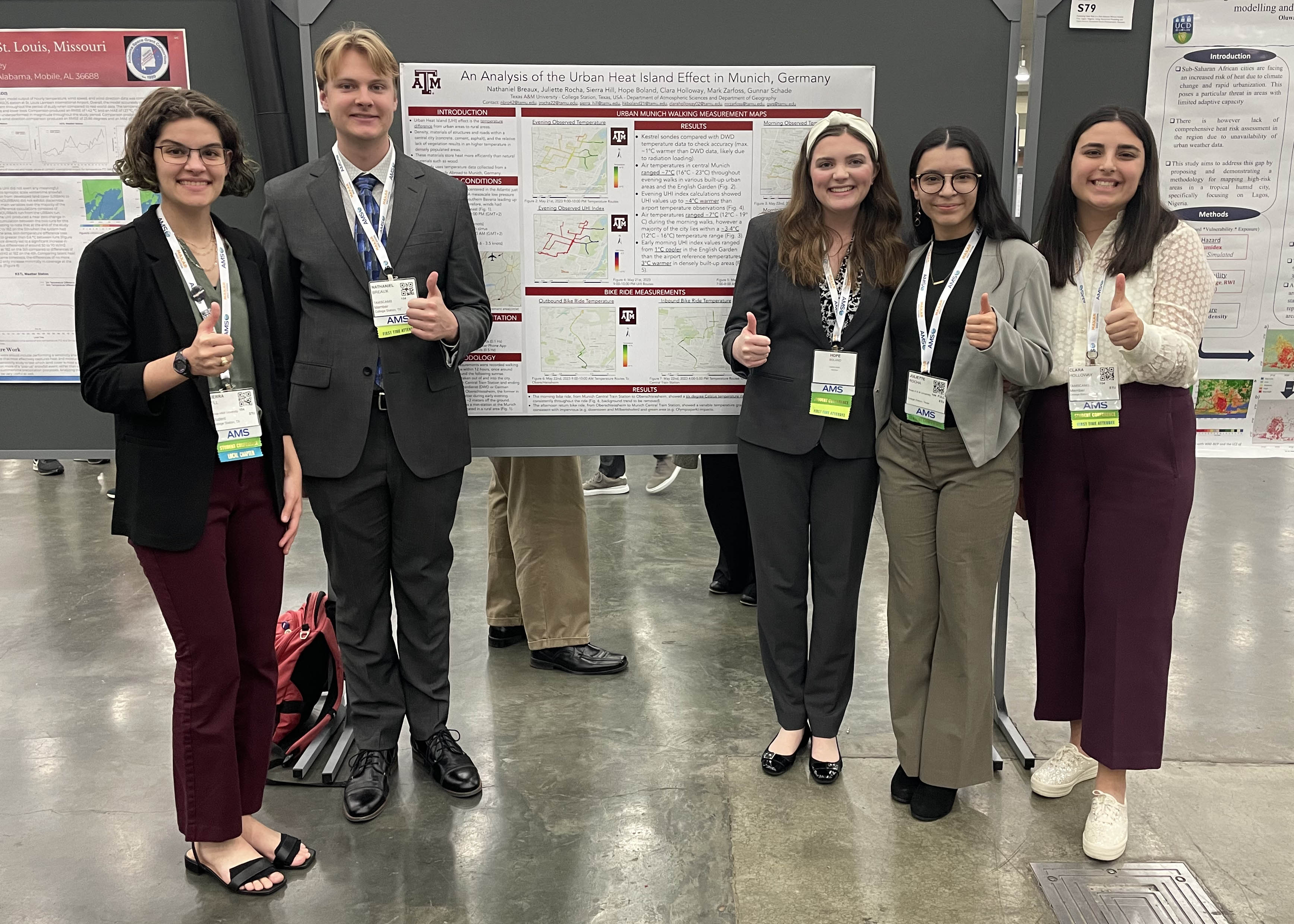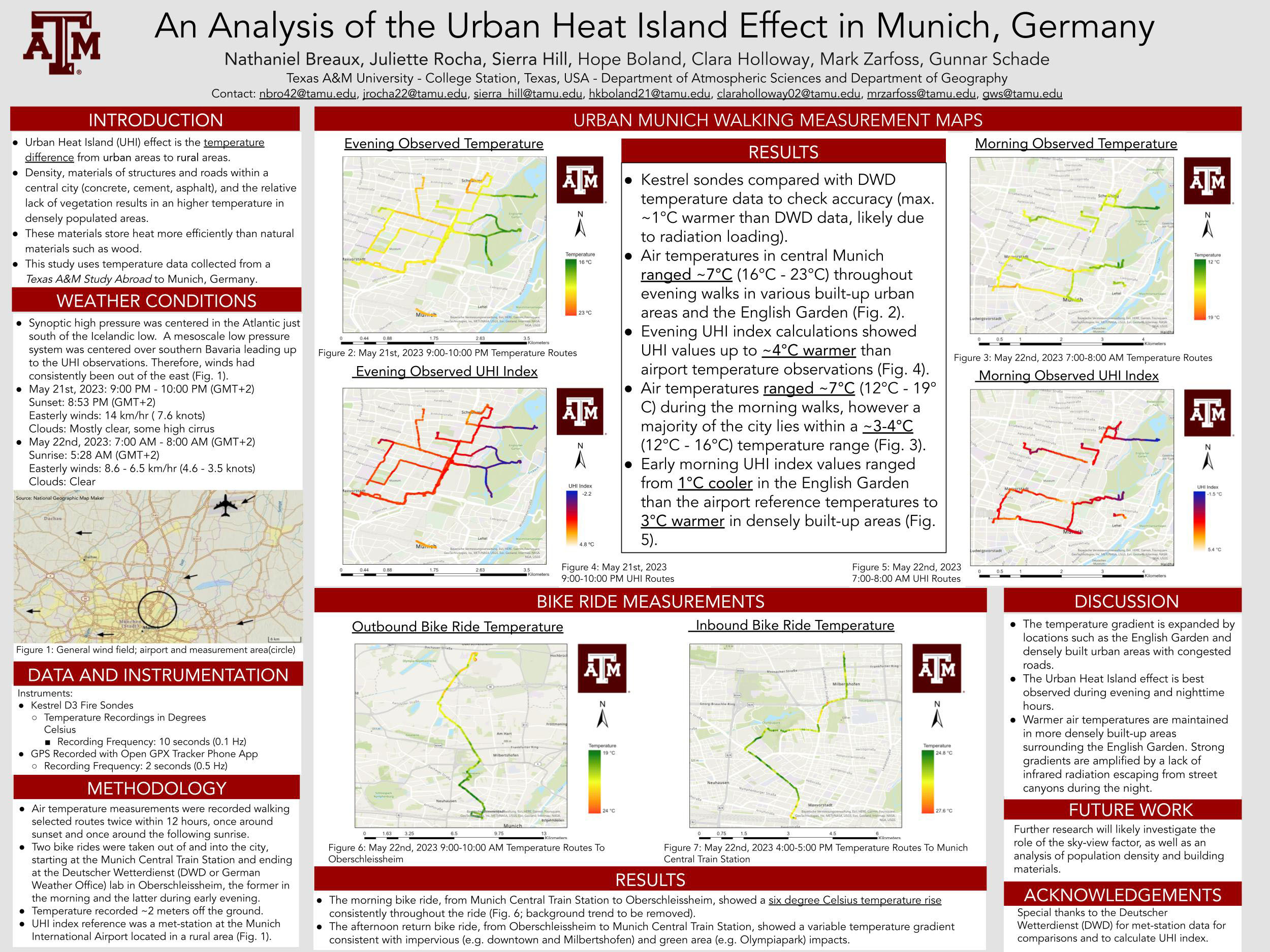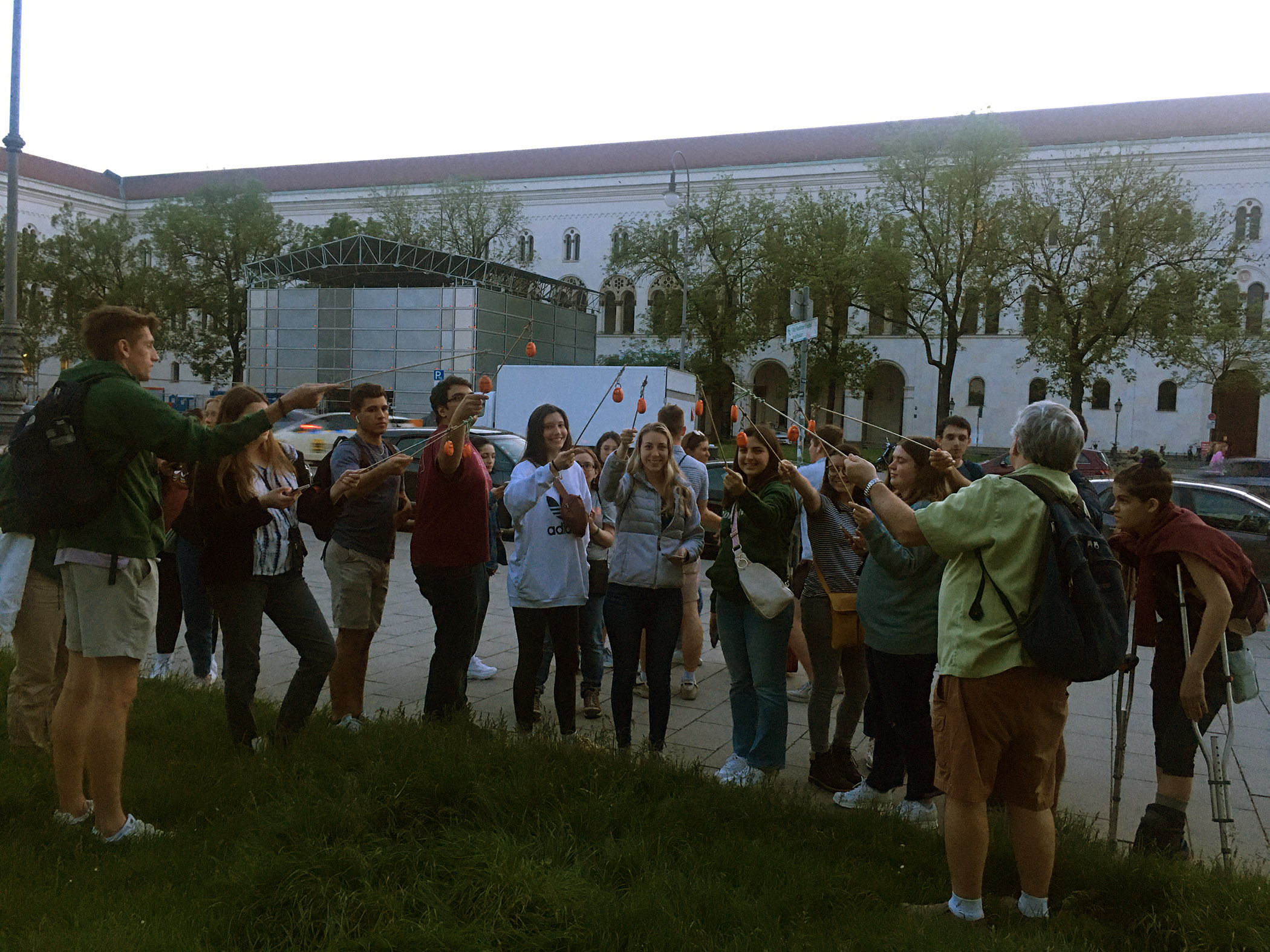
A group of undergraduate students in the Department of Atmospheric Sciences and Department of Geography at Texas A&M University made a significant mark at the American Meteorological Society (AMS) 23rd Annual Student Conference held in Baltimore on January 27-28, 2024. Amid stiff competition, the team's research on urban heat islands in Munich, Germany, earned them one of the coveted poster presentation awards, distinguishing them among the top 13 out of approximately 250 student posters showcased at the event.
Led by senior meteorology major Sierra Hill '24, the research team included fellow meteorology majors Nathaniel Breaux '26, Juliette Rocha '24, Hope Boland '25 and Clara Holloway '25 as well as geographic information science and technology major Mark Zarfoss '24, under the mentorship of faculty advisor Dr. Gunnar Schade, an associate professor in Texas A&M Atmospheric Sciences. Their study focused on unraveling the complexities of urban heat in Munich, which served as their primary research site during a study abroad trip last May.

The crux of their findings highlighted the profound impact of urbanization on local temperatures. Their research revealed that within Munich's urban core, the urban heat island (UHI) index, which refers to the difference between temperatures at a location versus a rural station reference, surged to a magnitude of 4.4 degrees Celsius, contrasting starkly with the significantly lower magnitudes observed in green spaces like the English Garden, where the difference plummeted to -2.2 degrees Celsius. Their data offer compelling evidence that the widespread presence of concrete in urban areas worsens the UHI effect — a finding with significant implications, especially considering the ongoing challenges posed by climate change.
"This research has genuinely opened our eyes to the magnitude of the urban heat island effect,” Rocha said. “It's one thing to know that the UHI exists but another to be able to physically quantify it for a populous city. Applying the concepts we've learned in classes to a real-world issue is so rewarding and is why research in general is so important.”
The methodology employed by the team was creative and thorough. During their study abroad program in Munich, the students took measurements as members of 11 different groups, each assigned specific walking routes in the inner city, while recording air temperatures. The following day, a subset of students took rental bikes down to a Munich suburb and back, recording air temperatures along the routes to investigate local differences as driven by urban development. Once back in College Station, a smaller cohort processed the data, culminating in actionable insights that contribute to their understanding of UHI and their impact on local communities.

“In large sprawling cities, we often see large swaths of areas that have little to no green space and therefore an ability to get and stay hotter,” Hill said. “This brings into discussion urban planning and how we can include green spaces to cool communities in years that continually break heat-related records. Our findings underscore the urgent need for effective urban planning strategies aimed at mitigating the adverse effects of rising temperatures and enhancing the livability of our cities.”
In addition to national renown, the team's triumph at the AMS conference earned them a monetary award that they intend to use to help publicize their findings in recognition of the importance of disseminating their research results within the scientific community and general audiences.
